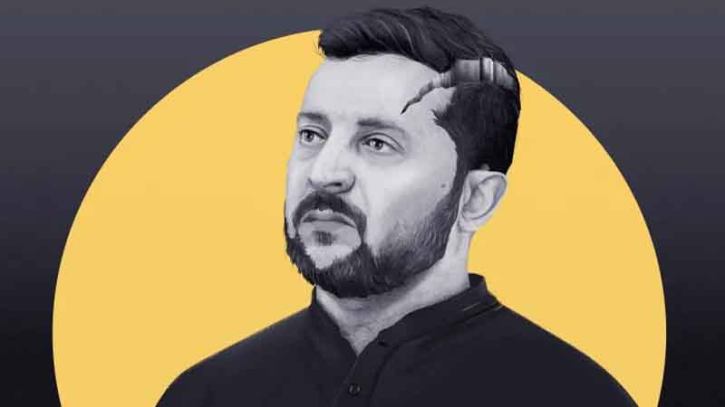
Volodymyr Zelenskyy
In 2014, Russia had already annexed Crimea and was supporting separatists in Donbas while backing pro-Kremlin protests in Ukraine’s eastern and southern regions. At the time, Volodymyr Zelenskyy was a comedian, actor, and leader of the District 95 troupe. Politics, for him, was a subject of satire rather than reality.
More than a decade later, Zelenskyy no longer makes a living from humor. Instead, he stands as the wartime president of Ukraine, facing the challenge of maintaining his country’s independence amid Russia’s full-scale invasion. As he prepares to meet U.S. President Donald Trump in Washington, the stakes for Ukraine are higher than ever, with Trump signaling a willingness to negotiate with Putin at Kyiv’s expense.
Rise to Political Power
Zelenskyy’s path to politics was unconventional. He gained fame portraying Vasily Holoborodko, a teacher-turned-president, in the TV series Servant of the People. Disillusionment with then-President Petro Poroshenko’s corruption scandals and failure to resolve the Donbas conflict made Zelenskyy an appealing alternative.
His campaign was built on an anti-establishment image, promising a future where bureaucracy was simplified, and peace was restored. His landslide victory in the 2019 presidential election, securing 73% of the vote, demonstrated the public’s overwhelming desire for change.
Challenges of Governance
Once in office, Zelenskyy faced a daunting political reality. His administration, composed largely of newcomers from his entertainment career and political rookies, struggled with governance. Corruption scandals and inefficiencies plagued his party, Servant of the People. Despite efforts to combat oligarchic influence, he faced criticism for appointing close allies, such as Andriy Yermak and Ivan Bakanov, to key positions.
A Wartime Leader Emerges
Zelenskyy initially sought diplomatic solutions to the conflict with Russia. However, by 2021, he realized that negotiations with Putin were futile. Sanctioning pro-Kremlin oligarchs and shutting down Russian propaganda channels marked a turning point. When Russia launched a full-scale invasion on February 24, 2022, he refused to flee, famously stating, “I need ammunition, not a ride.”
His leadership during the war transformed his image from an entertainer to a resolute wartime leader. Dressed in military fatigues, he addressed Western governments, securing critical military and financial aid. His determination turned him into Ukraine’s “Churchill,” rallying both domestic and international support.
Political Rivalries and Future Uncertainty
Despite his wartime popularity, Zelenskyy faces increasing political challenges. The dismissal of General Valerii Zaluzhnyi in 2024 stirred controversy, as Zaluzhnyi remains one of Ukraine’s most trusted figures, viewed by many as a potential presidential contender. With stalled counteroffensives and prolonged Western aid negotiations, frustration within Ukraine is growing.
Zelenskyy’s recent offer to resign in exchange for NATO membership and security guarantees for Ukraine underscores the immense pressure on him. His presidency, once a beacon of hope, now carries the weight of a nation struggling for survival.
Conclusion
Zelenskyy’s journey from comedian to wartime president is a testament to resilience and adaptability. Yet, as Ukraine faces an uncertain future, the question remains—can Zelenskyy navigate the country through its most challenging chapter, or will new leadership emerge to take on the mantle?

































.png)
.png)







